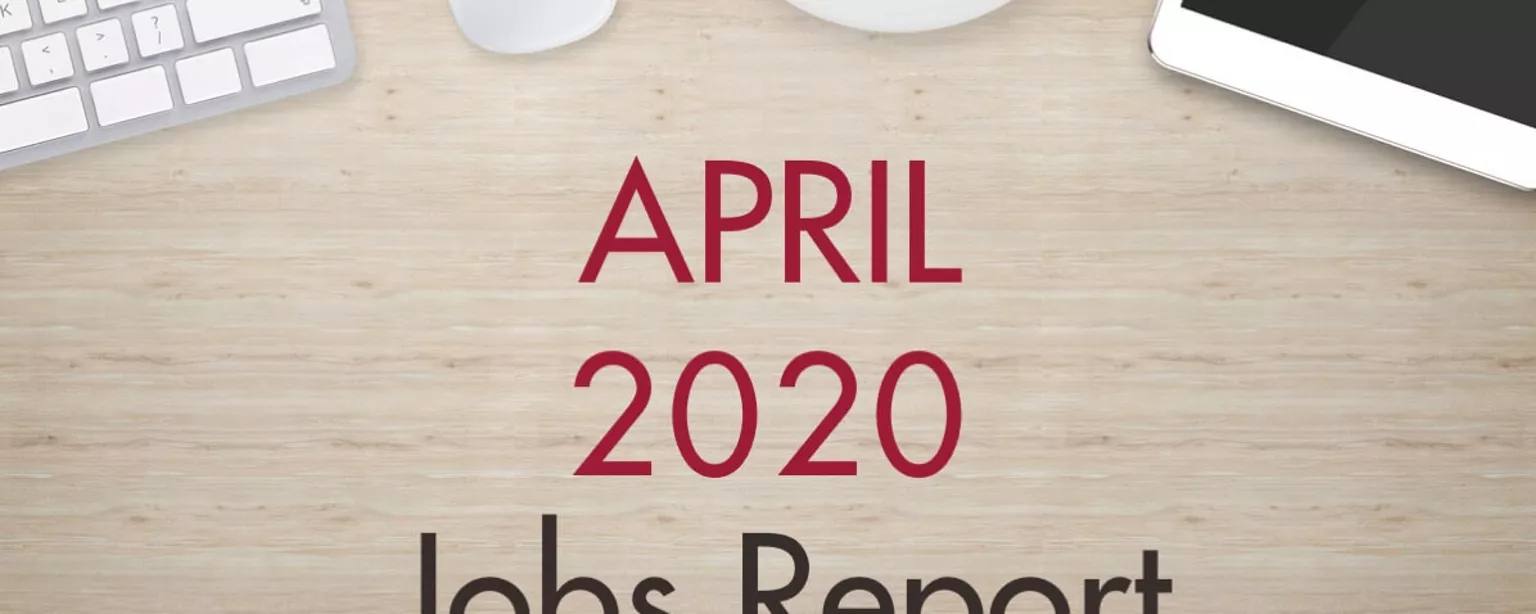As expected, the April jobs report from the Bureau of Labor Statistics (BLS) provided a clearer picture of COVID-19’s swift and dramatic impact on the U.S. job market, which had seen near-record-low unemployment in the months before the pandemic.
In April, unemployment hit 14.7%, up from 4.4% in March. That is the highest rate and the largest month-over-month increase since the BLS began reporting on this information in January 1948.
The unemployment rate for college-degreed workers who are 25 or older — those most highly sought-after by employers — still sits well below the national rate, at 8.4%.
Largest job losses in leisure and hospitality
Employers cut payrolls by 20.5 million jobs in April.
All major industry sectors reported job losses. The leisure and hospitality industry was impacted most, with employment down by 7.7 million. Education and health services, professional and business services, and retail trade also experienced steep declines.
One potential bright spot: Many unemployed workers — 18.1 million — reported that they had been temporarily laid off, and they expect to return to work as businesses recover.
What employers need to know
Despite the large number of pandemic-related job losses, there is hiring going on.
But employers have had to adjust their hiring approach to fit the current environment. That includes conducting remote job interviews and creating a remote onboarding experience.
Another key challenge for companies looking to hire is the lack of resources to manage the process, especially since it is more complicated now.
Many businesses are also taking a more cautious approach to staffing certain roles, choosing to engage highly skilled temporary professionals until conditions stabilize.
The following blog posts can help you hire and manage a remote team:
- How to Hire Remote Workers, Remotely
- How to Manage a Remote Team
What job seekers need to know
It goes without saying that many job seekers feel extremely discouraged by the current hiring environment. But keep in mind that the April jobs report doesn’t provide a full picture of the employment landscape. Companies in various industries are hiring right now. No doubt, you’ll need to work hard to find opportunities that fit your skills and experience. But they are out there.
An increasing number of companies are hiring remote workers now that they have seen how effective working from home can be.
If you’re new to remote work, it can take some adjustment. We have several up-to-date resources that offer tips on how to find and succeed in remote jobs. Here are links to some of them; you can find even more on the Robert Half blog:
- How to Find Remote Jobs Now
- Top Video Job Interview Tips
- Tips for Remote Employees Starting a New Job
- How to Work From Home — and Actually Get Work Done
APRIL 2020 U.S. BUREAU OF LABOR STATISTICS MONTHLY JOBS SUMMARY
20,500,000 JOBS LOST*
14.7% UNEMPLOYMENT RATE*
8.4% UNEMPLOYMENT RATE UNEMPLOYMENT RATE FOR COLLEGE GRADS*/**
UNEMPLOYMENT RATE OVER THE PAST 12 MONTHS*
| Unemployment Rate | Unemployment Rate for College Grads | ||
|---|---|---|---|
| May '19 | 3.6% | 2.1% | |
| June '19 | 3.7% | 2.1% | |
| July '19 | 3.7% | 2.2% | |
| August '19 | 3.7% | 2.1% | |
| September '19 | 3.5% | 2.0% | |
| October '19 | 3.6% | 2.1% | |
| November '19 | 3.5% | 2.0% | |
| December '19 | 3.5% | 1.9% | |
| January '20 | 3.6% | 2.0% | |
| February '20 | 3.5% | 1.9% | |
| March '20 | 4.4% | 2.5% | |
| April '20 | 14.7% | 8.4% |
*Source: Bureau of Labor Statistics
**College-degreed workers 25 and older
See what these results mean for job seekers and employers at roberthalf.comhttps://www.roberthalf.com/blog.
WORKING FROM HOME IS WORKING
60% of office professionals who transitioned to a remote setup said they have better work-life balance without a commute.
Source: Robert Half survey of more than 1,000 workers in the U.S.
© 2020 Robert Half. An Equal Opportunity Employer M/F/Disability/Veterans.
roberthalf.com








